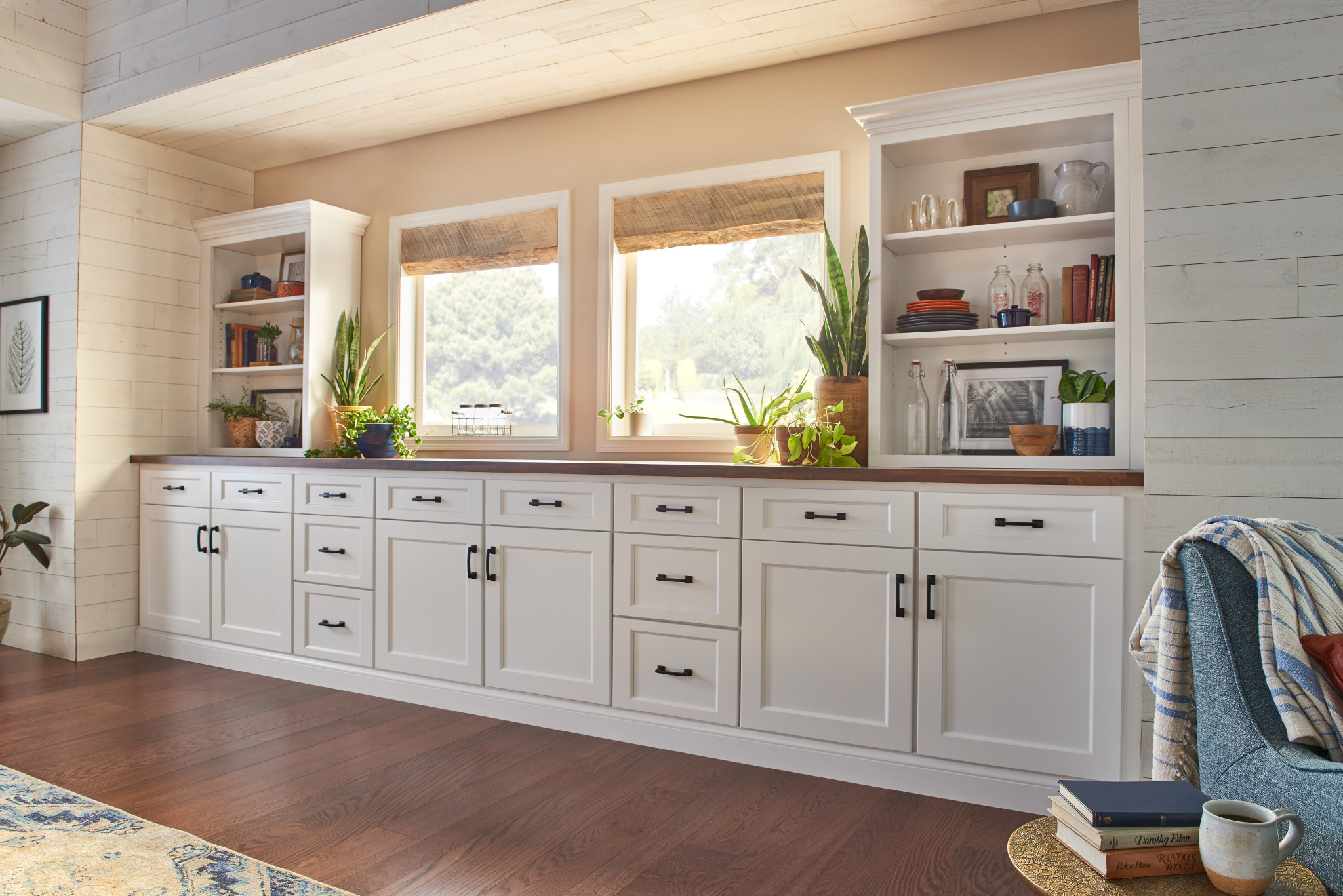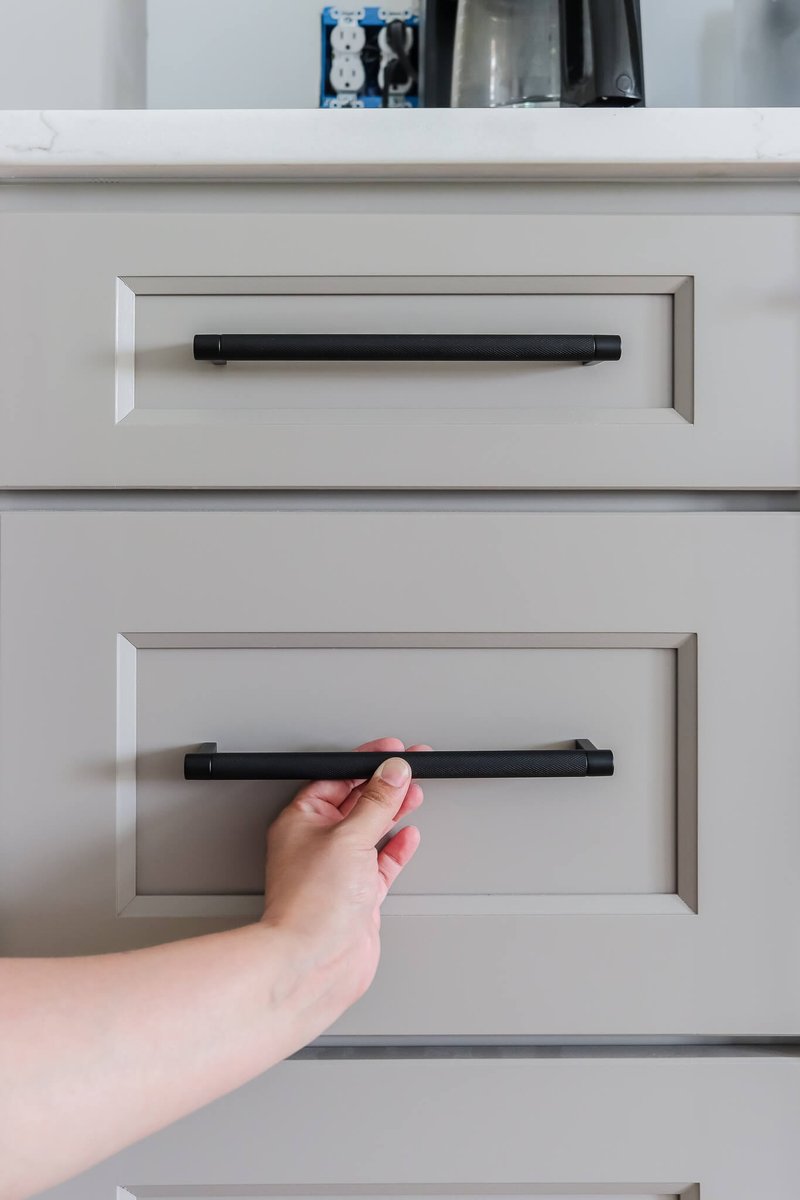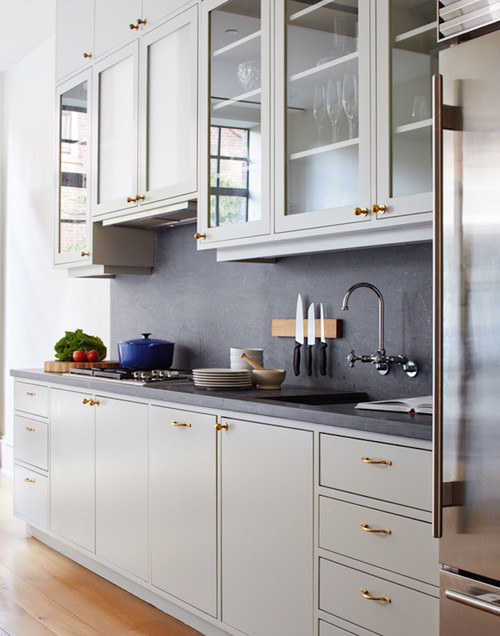Your Ultimate Guide To Choosing Hardware For Kitchen & Bathroom Cabinets
Choosing hardware for kitchen & bathroom cabinets is a pivotal design decision that infuses your space with personality and enhances its daily utility. This choice is more than a finishing touch; it is a fundamental element of your home’s character. At rtadepot.ca, we specialize in guiding Canadian homeowners through this exciting process, ensuring your selection is both beautiful and perfectly functional. The right cabinet handle selection elevates your home’s aesthetic and streamlines your routine, contributing to a truly harmonious living environment. This detailed guide simplifies the task of Choosing hardware for cabinets.
We understand that this process can feel overwhelming. With so many styles, materials, and sizes, making a confident choice is challenging. This guide provides cabinet hardware selection tips to empower you. Our goal is to make the process of Choosing hardware for cabinets an enjoyable and rewarding experience. We will explore everything from the basic types to the latest trends, ensuring you have all the information needed for picking the right cabinet fixtures. Let us begin this journey together.
1. What Are The Different Types Of Cabinet Hardware?
The journey of Choosing hardware for cabinets starts with understanding the primary categories: knobs and pulls. These two types serve as the foundation for nearly all cabinet designs across Canada. Knobs are single-point hardware, secured with just one screw. Their compact size makes them incredibly versatile, suitable for both cabinet doors and smaller drawers. They can be round, square, oval, or take on more eclectic shapes, offering a subtle yet impactful design element.

Pulls, on the other hand, are linear handles that require two screws for installation. They offer a larger surface area to grip, making them a practical choice for heavy drawers or for individuals who appreciate easier accessibility. The decision between knobs and pulls often comes down to personal preference and the specific needs of your space. Many designers choose to mix both, using knobs for doors and pulls for drawers, creating a balanced and dynamic look. This is a common strategy when Choosing hardware for cabinets.
1.1. Knobs: Classic and Versatile
Knobs are the chameleons of the hardware world. A simple round knob in brushed nickel can feel modern and understated, while a faceted glass knob can evoke a sense of vintage glamour. T-bar knobs offer a contemporary alternative, blending the single-screw installation of a knob with the linear look of a pull. For homeowners in Canada, the sheer variety of available knobs makes them a go-to choice for adding a customized touch without overwhelming the cabinetry design. The task of Choosing hardware for cabinets often starts here.
1.2. Pulls: Functional and Stylish
Pulls come in an even wider array of styles. Bar pulls are the most popular for modern designs, featuring a straight, clean rod. Wire pulls offer a more delicate, industrial feel. Cup pulls, with their classic half-moon shape, are a hallmark of farmhouse and transitional kitchens, providing a comfortable, underhand grip. When Choosing hardware for cabinets like large pantry doors or integrated appliance panels, a longer appliance pull is necessary to provide adequate leverage and a proportional look.
1.3. Backplates: The Decorative Foundation
Backplates are a stylish and functional addition to consider when Choosing hardware for cabinets. These are thin plates of metal that sit between the knob or pull and the cabinet surface. Functionally, they protect the cabinet finish from wear and tear caused by fingernails and daily use. Aesthetically, they add a layer of depth, detail, and visual weight to your hardware, creating a more substantial and custom look. A backplate can also cleverly cover old hardware holes if you are updating your cabinets.
2. How Should You Choose The Right Size Hardware For Cabinets?
Short Answer: For a balanced look, follow the “rule of thirds.” Choose a pull that is approximately one-third the width of the drawer. For doors, a versatile 5 to 6.5-inch pull is a safe and stylish choice for most standard sizes. According to 2025 design guides, consistency in size is key for a clean, modern aesthetic.
Properly sizing your hardware is essential for achieving a professional and balanced design. Hardware that is too small can look lost on a large drawer, while oversized hardware can overwhelm smaller cabinets. The widely used “rule of thirds” suggests selecting a pull that is approximately one-third the length of the drawer front. For example, a 24-inch drawer would look great with an 8-inch pull. This principle helps create visual harmony and is a reliable starting point for Choosing hardware for cabinets.
For cabinet doors, you can apply this rule to the door’s height for a vertical pull or its width for a horizontal placement. However, many Canadian homeowners prefer to maintain consistency by using one or two standard pull sizes throughout the kitchen. A popular combination is using 5-inch pulls for all upper and lower cabinet doors and a longer 8 or 10-inch pull for all drawers. This creates a clean, cohesive appearance. The journey of Choosing hardware for cabinets involves these careful considerations.
2.1. What Is The Critical “Center-to-Center” Measurement?
Short Answer: The “center-to-center” measurement is the distance between the center of the two screw holes on a cabinet pull. It is the most important measurement for installation, ensuring the hardware fits the pre-drilled holes in your cabinetry.
When you see a pull’s size listed, it is most often referring to the “center-to-center” measurement. This is the distance between the center of one screw hole to the center of the other. It is the most critical measurement for installation. Before purchasing, it is vital to know the center-to-center measurement you need, especially if you are replacing existing hardware. Using the same measurement will save you from having to drill new holes and patch old ones.
2.2. A Detailed Sizing Guide

To further simplify the process of Choosing hardware for cabinets, here is a more detailed breakdown of common sizes used in homes across Canada.
3. What Are The Best Materials For Cabinet Hardware?
The material you select for your hardware determines its durability, texture, and visual appeal. According to industry reports from the National Kitchen & Bath Association for 2025, there is a strong shift towards sustainable and artisan-crafted materials. The process of Choosing hardware for cabinets is an investment in your home’s future, and the material is a key factor in that investment. A high-quality material will withstand years of daily use, resisting wear and maintaining its beauty.
For the diverse Canadian climate, material choice is especially important. Coastal areas with higher humidity require materials with excellent corrosion resistance, such as 316-grade stainless steel. In any kitchen or bathroom, a material that is easy to clean and maintain will make life simpler. Let us explore the most popular options available to homeowners in Canada. Thoughtful Choosing hardware for cabinets means selecting a material that fits your home’s environment and your lifestyle.
3.1. Stainless Steel: The Modern Workhorse
Stainless steel is a top choice for its incredible durability and resistance to rust and corrosion. It is an ideal material for the high-moisture environments of kitchens and bathrooms. Its sleek, neutral appearance complements a wide range of modern and contemporary cabinet styles. While it can show fingerprints, many stainless steel options now come with a brushed finish that helps to minimize smudges. This is a practical consideration when Choosing hardware for cabinets.
3.2. Brass: Timeless and Warm
Solid brass is a premium material known for its strength and classic appeal. It comes in various finishes, from polished brass for a bright, reflective look to satin brass for a softer, modern feel. Unlacquered brass is a living finish that will naturally tarnish and develop a unique patina over time, adding a layer of character to your space. While it represents a higher initial investment, its durability makes it a worthwhile choice in the long journey of Choosing hardware for cabinets.
3.3. Zinc Alloy: Versatile and Affordable
Zinc alloy is a very popular material because it is cost-effective and can be easily cast into a vast array of shapes and designs. It is then plated with finishes like chrome, nickel, or matte black. While not as robust as solid brass or stainless steel, modern zinc hardware offers excellent value and durability for its price point, making it a great option for budget-conscious renovation projects across Canada. This makes the process of Choosing hardware for cabinets accessible to more people.
3.4. Bronze: Rich and Rustic
Bronze, particularly oil-rubbed bronze, offers a deep, dark finish with warm undertones. This material is exceptionally durable and brings a sense of rustic or traditional elegance to cabinetry. It pairs beautifully with wood cabinets and is a staple in farmhouse, Tuscan, and rustic designs. Its dark, rich color is also very effective at hiding fingerprints and minor wear, making it a practical and stylish option for a busy household. Choosing hardware for cabinets with a bronze finish adds instant warmth.
4. How To Match Hardware With Your Cabinet Style?
Creating a cohesive look means selecting hardware that acts as a natural extension of your cabinet’s design language. The hardware should complement, not compete with, the style of the doors and drawers. Whether your home aesthetic is sleekly modern, classically traditional, or rustically charming, the right hardware will tie the entire room together. The art of Choosing hardware for cabinets lies in this successful pairing.
4.1. For Modern and Minimalist Cabinets
Modern cabinetry, defined by its flat-panel doors and clean lines, demands hardware that is equally understated. Slim bar pulls, sleek T-bar knobs, or minimalist edge pulls are perfect choices. Finishes like matte black, brushed nickel, and stainless steel enhance the contemporary feel. The philosophy here is “less is more,” ensuring the hardware contributes to the clean and uncluttered aesthetic. This is the essence of Choosing hardware for cabinets for a modern space.

4.2. For Traditional Cabinets
Traditional cabinets, with their raised panels and detailed millwork, call for more ornate and decorative hardware. Look for knobs and pulls with graceful curves and intricate details. Materials like antique brass, polished nickel, or oil-rubbed bronze add a sense of timeless elegance. Drop pulls and knobs with ceramic or glass accents can also introduce a classic, jewel-like quality. When Choosing hardware for cabinets in a traditional kitchen, think elegance and detail.
4.3. For Farmhouse and Rustic Styles
The farmhouse style, popular across rural and urban Canada, emphasizes warmth, simplicity, and practicality. Matte black or bronze cup pulls and simple round knobs are the go-to choices. For a more rustic or cottage look, hardware made from cast iron or with a hammered texture can add an authentic, handcrafted feel. This style of Choosing hardware for cabinets is about creating a comfortable and inviting atmosphere.
4.4. For Scandinavian Designs
Scandinavian design, known for its blend of minimalism and natural warmth, is a favorite in many Canadian homes. Hardware for this style is often very subtle. Consider slim wooden knobs or pulls, or minimalist hardware in leather or brushed brass. Often, Scandinavian designs feature handleless cabinets with integrated grooves, but where hardware is used, it is chosen with great care. The thoughtful process of Choosing hardware for cabinets is central to this design ethos.

5. What Are The Latest Trends In Kitchen And Bathroom Hardware?
While classic choices are always in style, being aware of current trends can help give your space a fresh and contemporary edge. For 2025 and 2026, design forecasts show a clear movement towards bold personalization, mixing materials, and smart technology. The process of Choosing hardware for cabinets now includes a wider palette of exciting options that can make your space truly unique. These trends reflect a broader movement towards creating homes that are both stylish and deeply personal.
One of the most significant trends is the continued rise of warm-toned metals. While chrome and nickel have their place, finishes like champagne bronze, aged brass, and soft gold are in high demand. These finishes add a touch of sophisticated warmth that feels less clinical and more inviting. They pair beautifully with the popular cabinet colors of today, including deep greens, blues, and warm whites. Choosing hardware for cabinets in these tones adds a touch of modern luxury.
5.1. The Rise of Textured and Mixed-Material Hardware
Texture is a key element in 2025 design. Knurled hardware, with its precise, cross-hatched texture, is incredibly popular. It offers a unique industrial-chic look and a pleasing tactile experience. Furthermore, hardware combining materials like metal with wood, marble, or leather is gaining traction, reflecting a desire for unique, artisan-crafted details. This is an exciting development in Choosing hardware for cabinets.
5.2. Smart and Sustainable Choices
Technology is integrating into hardware with touchless, push-to-open mechanisms becoming more common for a seamless, handle-free look. At the same time, sustainability is a growing priority. Homeowners in Canada are increasingly seeking hardware made from recycled or responsibly sourced materials. This eco-conscious approach allows for a beautiful home that is also kind to the environment, making the process of Choosing hardware for cabinets more thoughtful.
6. Functionality And Ergonomics: Beyond The Look
While aesthetics are a primary driver, the true success of your hardware choice lies in its daily functionality. The ergonomics of your pulls and knobs are critical. Consider who will be using the space. For families with young children or for older adults who may have difficulty with grip strength, a substantial D-shaped pull is often more comfortable and easier to use than a small, slick knob. The projection of the hardware—how far it sticks out from the cabinet—is also important to ensure you can get your fingers around it comfortably. This is a vital aspect of Choosing hardware for cabinets.
The placement of the hardware also impacts usability. For base cabinet drawers, placing pulls horizontally at the top-center of the slab is standard. For doors, placement can vary. Installing knobs or pulls on the stile (the vertical frame) is traditional, but placing them higher or lower can change the feel. Taking the time to test different placements with a template before drilling can make a world of difference in your daily interaction with your cabinets. Choosing hardware for cabinets is about designing for your life.
7. The Installation Process: DIY vs. Professional

Once you have made your selection, the final step is installation. For the handy homeowner in Canada, installing cabinet hardware can be a satisfying DIY project. The most important tool for this job is a cabinet hardware jig. A jig is an adjustable template that ensures you drill your holes in the exact same location on every door and drawer, guaranteeing a straight, professional-looking result. Always measure twice and drill once.
However, if you are not comfortable with power tools or are installing a large number of pieces, hiring a professional installer or a cabinet company like rtadepot.ca is a wise investment. Professionals have the tools and experience to get the job done quickly and perfectly, without the risk of costly mistakes like a misaligned hole on a brand new cabinet door. When you are investing in beautiful new cabinets, ensuring the hardware is installed flawlessly is the final, crucial step. This completes the journey of Choosing hardware for cabinets.
8. Budgeting For Your Cabinet Hardware
Hardware costs can vary dramatically, from a few dollars per piece to over a hundred for high-end, designer options. It is essential to factor this cost into your overall renovation budget from the start. The material is the biggest determinant of price. Solid brass and bronze will be at the higher end, while zinc alloy and aluminum will be more budget-friendly. Choosing hardware for cabinets involves a financial decision as well as a stylistic one.
To manage costs, consider where to save and where to splurge. For a large kitchen with many cabinets, you might choose a cost-effective zinc alloy pull for the bulk of the cabinetry. Then, you could splurge on a few statement pieces in solid brass for a special feature, like a hutch or an island. At rtadepot.ca, we offer a wide range of hardware options to suit various budgets, ensuring every Canadian homeowner can find a quality product that completes their vision without compromise. The process of Choosing hardware for cabinets should be exciting, not stressful.
Transform Your Home with Expert Canadian Guidance
Are you tired of outdated cabinets that no longer serve your family’s needs? Do you dream of a kitchen or bathroom that is organized, stunning, and a perfect reflection of your personal style? The frustration of inefficient design and the challenge of Choosing hardware for cabinets can be overwhelming.
Our dedicated design consultants at rtadepot.ca are experts in solving these exact problems for homeowners across Canada. We provide intelligent design solutions to maximize your storage and create a luxurious, modern feel that is uniquely you. We are committed to providing durable, beautiful cabinetry and the perfect hardware. Let us help you turn your vision into a reality with a clear and supportive process from start to finish. The final decision in Choosing hardware for cabinets will be one you love for years.
Take the first step toward the home you have always wanted. Contact our team for a personalized design consultation.
Call rtadepot.ca today at +1 888 973 5636 or visit our website at https://www.rtadepot.ca/ to begin your transformation.










